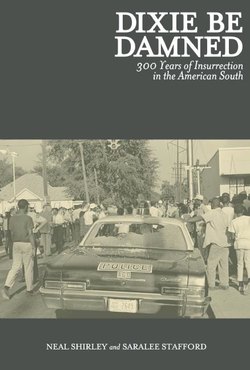Читать книгу Dixie Be Damned - Neal Shirley - Страница 8
На сайте Литреса книга снята с продажи.
ОглавлениеNear the end of the Civil War, in January 1865, Union General William Tecumseh Sherman arrived in Savannah, Georgia with his army of capital, “dripping from head to foot, from every pore, with blood and dirt.”62 The destruction caused by his army was general and total throughout Georgia, South Carolina, and parts of North Carolina. “One could track the line of Sherman’s march … by the fires on the horizon. He burned the ginhouses, cotton presses, railroad depots, bridges, freighthouses, and unoccupied dwellings.”63 The violence spared no one, neither plantation playboys nor poor laborers, owners nor fieldhands, free nor enslaved.
Thousands of formerly enslaved men, women, and children trailed the victors, many among them ambivalent to the Union, careless of the Confederacy, but with a burning hatred of the planter class and with a desire to take advantage of the opportunity opened up by the Union’s invasion. Sherman’s destruction not only served military interests, but industrialists as well, paving the way for reinvestment in the South by northern capitalists—what history will call the period of Reconstruction. For a very limited time at the end of the Civil War, attacks on the plantation economy by slaves and laborers partly coincided with the scorched earth policy of an army serving northern business interests.
The Civil War brought to a head conflicts over race and competing visions of economic production that had been simmering for decades, but it did so on the terms of the ruling class, answering these problems in ways that perpetuated capitalist and colonialist conditions while realizing modern forms of exploitation for a new era. Nevertheless, the power vacuum opened up in this tumultuous period offered an opportunity to former slaves and fugitives who had built up networks of resistance and established maroon communities before the war. Insurgents continued to attack the plantation system long after the military conflict had ended, taking advantage of the state’s loss of regional control when possible, but also beginning to simultaneously respond to and reject northern models of democracy and wage work. Tactics shifted accordingly; sabotage against the plantations persisted, but was accompanied by strikes, the self-organizing of farm laborers, the rejection of labor contracts, the occupation of land, and armed community defense from white vigilantes.
In Savannah, where the ocean temporarily cooled the flames of Sherman’s brutal march, Union troops arrived as a scattered mass. In one group stood the Union Army, who believed they were determining the fate of the South for years to come. In the other group were the fugitives and deserters, who were welcomed into the city, marshes, swamps, and islands by the thousands of men and women who would actually deliver the final blow to one of “the most close knit, aristocratic, and affluent group of planters [of] the antebellum South.”64
Endnotes
62 “If money … comes into the world with a congenital blood-stain on one cheek, capital comes dripping from head to foot, from every pore, with blood and dirt.” (Karl Marx, Capital: A Critique of Political Economy [New York: The Modern Library, 1906], 834.)
63 “John H. Kennaway, 1865,” in Standing upon the Mouth of a Volcano: New South Georgia, A Documentary History, ed. Mills Lane (Savannah: Beehive Press, 1993), 3.
64 Eric Foner, Nothing but Freedom: Emancipation and Its Legacy (Baton Rouge: Louisiana State University Press, 2007), 78.
